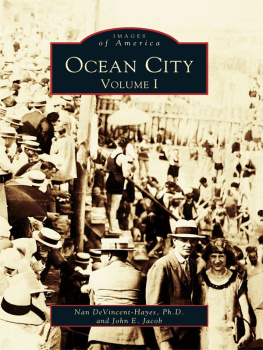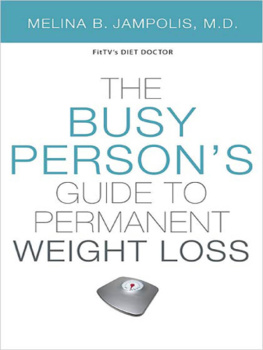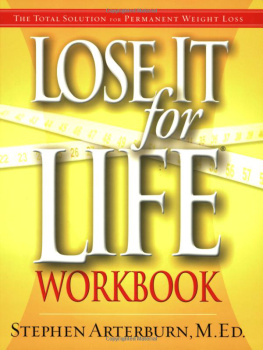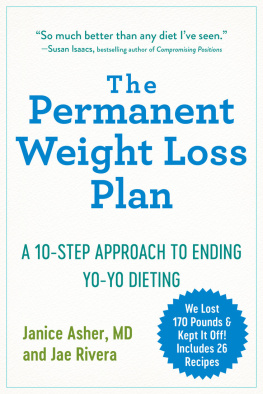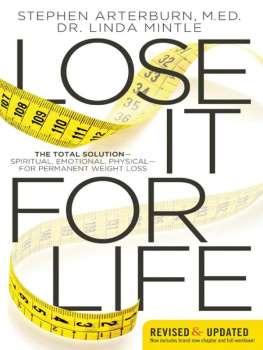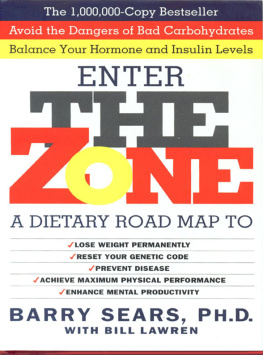Ph.D. - The Zone: A Revolutionary Life Plan to Put Your Body in Total Balance for Permanent Weight Loss
Here you can read online Ph.D. - The Zone: A Revolutionary Life Plan to Put Your Body in Total Balance for Permanent Weight Loss full text of the book (entire story) in english for free. Download pdf and epub, get meaning, cover and reviews about this ebook. year: 2009, publisher: HarperCollins e-books, genre: Romance novel. Description of the work, (preface) as well as reviews are available. Best literature library LitArk.com created for fans of good reading and offers a wide selection of genres:
Romance novel
Science fiction
Adventure
Detective
Science
History
Home and family
Prose
Art
Politics
Computer
Non-fiction
Religion
Business
Children
Humor
Choose a favorite category and find really read worthwhile books. Enjoy immersion in the world of imagination, feel the emotions of the characters or learn something new for yourself, make an fascinating discovery.
- Book:The Zone: A Revolutionary Life Plan to Put Your Body in Total Balance for Permanent Weight Loss
- Author:
- Publisher:HarperCollins e-books
- Genre:
- Year:2009
- Rating:5 / 5
- Favourites:Add to favourites
- Your mark:
- 100
- 1
- 2
- 3
- 4
- 5
The Zone: A Revolutionary Life Plan to Put Your Body in Total Balance for Permanent Weight Loss: summary, description and annotation
We offer to read an annotation, description, summary or preface (depends on what the author of the book "The Zone: A Revolutionary Life Plan to Put Your Body in Total Balance for Permanent Weight Loss" wrote himself). If you haven't found the necessary information about the book — write in the comments, we will try to find it.
The Zone: A Revolutionary Life Plan to Put Your Body in Total Balance for Permanent Weight Loss — read online for free the complete book (whole text) full work
Below is the text of the book, divided by pages. System saving the place of the last page read, allows you to conveniently read the book "The Zone: A Revolutionary Life Plan to Put Your Body in Total Balance for Permanent Weight Loss" online for free, without having to search again every time where you left off. Put a bookmark, and you can go to the page where you finished reading at any time.
Font size:
Interval:
Bookmark:
ZONE

A sword of Damocles hangs over my head, something I've known since my early twenties. You see, I'm a walking genetic time bomb.I'm genetically programmed by nature to die of heart disease within the next ten years. My early death seems all but inevitable: my grandfather, father, and every one of my three uncles were killed by heart attacks before they reached the age of fifty-four.
As I write, I'm forty-seven.
The genes that are killing the men in my family are insidious. To look at us, no one could imagine that we areor wereanything but healthy and hearty. My father, Dale Sears, was a great athlete in the 1940s. At only six feet two inches, tall, he was an All-American basketball center at the University of Southern California, as he liked to say, the last of the six-foot centers. He was chosen to play on the U.S. Olympic basketball team in 1940, but World War II robbed him of his Olympic opportunity. (I myself played college basketball, and continued playing volleyball at the national level for some time after receiving my Ph.D.)
After the war, my dad went into the floor-covering business with one of my uncles. He gained about twenty pounds and he smoked, but he was still active and in reasonably good shape. He continued to play basketball, and took up volleyball on the side.
When he was just forty-three, he had his first heart attack. I was thirteen at the time, and all I remember is that he spent a few days in the hospital. The doctors said it was a relatively mild attack, and he recuperated at home for another six weeks. Like all teen-agers, I wasn't much inclined to worry about health problems, even my father's. And he didn't seem too concerned either.
The next ten years brought more danger signs: two of my uncles had heart attacks. Then, when he was only fifty-three, my father had a second, fatal attack. There was no warning. He died in his sleep. During the next few years, my three uncles all died of heart attacks. They were all in their early fifties.
By then I could hear a clear message. If I didn't do something, I'd become an early victim too. So I did the normal things: tried to stay in shape by maintaining a highly athletic lifestyle, kept my weight under control, and ate what I thought was a healthy diet. But with my unfortunate genetics, I suspected that even that would not be enough.
I realized that to save my own life I would have to know much more. I needed to know what made the difference between a healthy heart and a heart so genetically flawed it would only last two-thirds of a normal lifetime.
By then I had already earned a Ph.D. in biochemistry from Indiana University. I was doing postdoctoral work at the University of Virginia, looking at the molecular structure of lipids, the medical name for the class of compounds that includes, among others, cholesterol and the so-called lipoproteins: HDL, LDL, and VLDL.
Up to then, my research had been pure basic science, I wanted to see how these complex molecules were put together. But my fathers death (and my own sense of impending doom) shifted my direction. Instead of just looking at the molecular architecture of cholesterol and its relatives, I decided to look at their role in heart disease. It was the early 1970s and, scientifically speaking, the study of cholesterol and its relationship to heart trouble was just getting off the ground. Still, it was already a hot and emerging medical field.
I knew a lot about lipids, but virtually nothing about heart disease. So I moved on to Boston University School of Medicine to work with Don Small, who was performing ground-breaking research on how the structure of lipids might be contributing to cardiovascular disease. I ensconced myself in the university medical library, reading anything I could find on the subject. I had no preconceptions, no base of knowledge to work from, so I read everything.
I eventually came across an obscure report. At San Francisco's Mount Zion Hospital, two researchers, Sanford Byers and Meyer Friedman, had induced atherosclerosisthe clogging and hardening of the arteries that often leads to heart attacksin rabbits by feeding the animals a diet high in saturated fat. Then half the animals were injected with the same phospholipids I had studied for my Ph.D. dissertation. The results were astonishing. The phospholipid injections acted like a biological Roto-Rooter, completely clearing most of the animal's clogged arteries, in effect erasing all traces of heart disease.
My interest was already starting to be rewarded. But this report appeared in a very obscure journal, so I continued reading. Soon I found an equally obscure report in which Jonas Maurukas and Robert Thomas had replicated the earlier work with phospholipidsnot to see if it was right, but to prove it wrong. (In fact, almost all the noted researchers seemed to think the earlier work was idiotic. How could you eliminate heart disease simply by injecting phospholipids into animals?) These investigators were going to use a better animal model and better techniques to prove how wrong this early report was. Much to their surprise, they got the same resultselimination of all traces of atherosclerotic lesions.
Similar results continued to appear in scientific literature about every three to five years. Then in 1975 researchers at Upjohn published definitive research confirming these isolated reports. In essence, heart disease could be reduced, if not eradicated, through a simple injection of the natural lipids that are the basis of every cell in the body. This was real biotechnology! Since I was one of the few scientists studying phospholipids at that time, I thought I was going to go to the head of the classnot to mention save my own life.
When the Upjohn scientists published their research, it should have been big news. It should have touched off a furious race among the giant drug companies to develop and market phospholipids as a treatment for heart disease in humans. But it didn't. The drug manufacturers had a business problem: phospholipids are natural substances, and it's impossible to get a patent for something that occurs in nature. Without the possibility of the exclusive rights a patent confers, the drug companies, including Upjohn, were not interested.
But I was. Younger and more naive then, I thought the only thing I needed to cure atherosclerosis was to develop a patentable phospholipid. This newly created substance would act like a chemical Roto-Rooter (just like a natural phospholipid), sucking the cholesterol from artery-clogging plaques and carrying it to the liver, where it would be metabolized like garbage in an incinerator. If I could turn this trick, I realized, it might not only save my own life, it could also help lengthen the lives of millions of heart-disease patients. And, of course, in the process I would become a pharmaceutical tycoon.
As I would soon discover, life is never quite that easy or straightforward.
Through my research background, I already knew quite a bit about how to change the molecular structure of phospholipids. Making small changes in that structure, I could produce a phospholipid-like substance that could be patented. That, I thought, should prove interesting to the big drug companies, which had the money and the facilities to take a phospholipid drug to the public. I went to my funding partnersmy mother, my father-in-law, and my aunts and unclesand in 1976 started one of the first biotech companies: Lipid Specialties, Inc. I rented lab space in downtown Boston and started working with a single technician to eradicate heart disease.
Font size:
Interval:
Bookmark:
Similar books «The Zone: A Revolutionary Life Plan to Put Your Body in Total Balance for Permanent Weight Loss»
Look at similar books to The Zone: A Revolutionary Life Plan to Put Your Body in Total Balance for Permanent Weight Loss. We have selected literature similar in name and meaning in the hope of providing readers with more options to find new, interesting, not yet read works.
Discussion, reviews of the book The Zone: A Revolutionary Life Plan to Put Your Body in Total Balance for Permanent Weight Loss and just readers' own opinions. Leave your comments, write what you think about the work, its meaning or the main characters. Specify what exactly you liked and what you didn't like, and why you think so.


